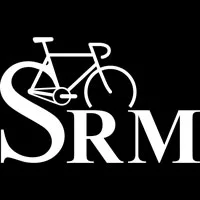SRM – Schoberer Rad Messtechnik – was founded by engineer Ulrich Schoberer in 1986. Prior to this the qualified medical engineer had spent many years thinking up and experimenting with ways to measure an athlete’s power output on the pedals under real conditions during an actual ride.
Up until the eighties, no adequate method had been found to measure performance on a bike in training or racing, you still had to rely on lab testing instead. This meant that athletes were forced to go back and forth between their real performance – cycling on the road or cross country – and the ergometer in the lab. With lab testing, they still couldn’t tell how their performance had changed over a period of a few hours, either in a race or in training. Lab testing was an intermittent check-up, at best, but couldn’t tell athletes anything about how they were performing day-to-day. And the most important performance – during competition – couldn’t be tested.
It wasn‘t until Ulrich Schoberer developed and patented the SRM Training System that it at last became possible to measure power in watts while cycling. SRMs measure the only aspect of training that is absolute, POWER, which isn’t affected by the kinds of influences, like weather conditions (temperature, wind) you see when you measure physiological variables such as heart rate or speed. Even better, pedalling power is measured at the point where output really occurs, on the special crank, the SRM Powermeter.
The development of the SRM systems began in 1986, and since then their further development has benefited from the ideas and experience of important sport scientists, coaches, trainers and professional cyclists from Italy, Great Britain, the USA and Germany.
Over the years, SRM Training Systems have become the reference tool for the best cyclists in the world. Athletes like Greg Lemond, Mario Cippolini, Erik Zabel, Andre Greipel, Peter Sagan, Mark Cavendish and Tadej Pogacar, national teams, sport universities, coaches and serious recreational athletes have been using SRM PowerMeters to get the best out of themselves. And so, have professional athletes from other sports, such as NHL hockey players, cross-country skiers and Formula One drivers.
The principle has stood the test of time for over 30 years, and under every condition imaginable; SRMs were even used on board the MIR space station under conditions of zero gravity.
To meet the ever-increasing demand from the field of professionals, serious amateurs, and hobby athletes – the SRM Training System is available in any number of different versions. Whether on the road, cross-country or on the track, our SRM engineers have developed efficient and specific solutions for every area.
The components that are used to build the SRM Training System are chosen because they are the best ones to do the job, and this is where our reputation for high quality comes from; the kind of quality that people have come to expect from German engineering.
Our versatile product rage is set up to find a solution for every customer, no matter how special your build is. You can choose between pedal- or spider-based power measurement, configure your crank type and length, spindle size (for bottom bracket compatibility) and BCD.




























